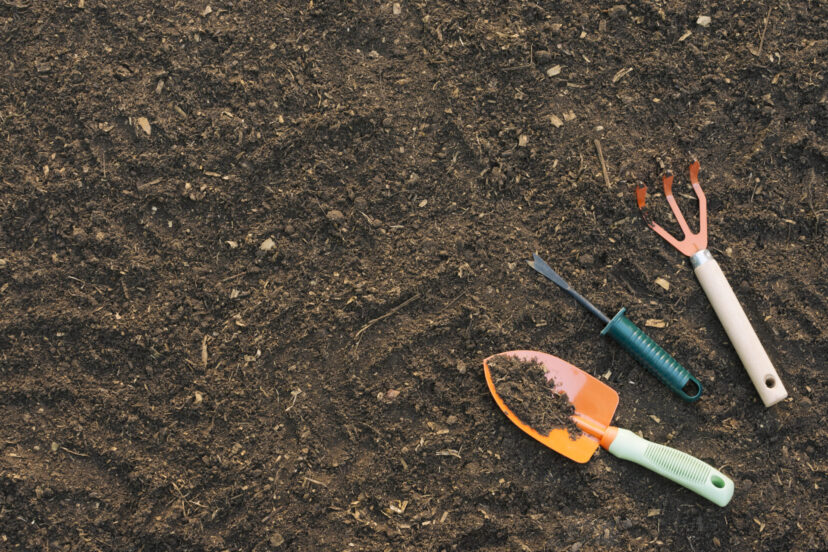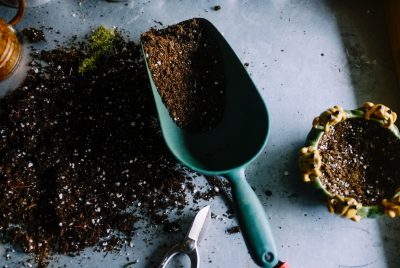No-Dig Gardening: low maintenance garden preparations
Hello there, fellow gardening enthusiasts! Today, I’m excited to share with you a fascinating technique called no-dig gardening, a practice that ensure that your effort to keep your garden soil healthy is kept to the minimum and at the same time yield bountiful and delicious food. In this article, we will explore the basic principles of no-dig gardening, learn about its origins, and uncover how it can transform your gardening experience. So, grab your gardening tools, and let’s get started on this journey towards a bountiful, low-effort garden!
The Inventor Behind No-Dig Gardening
Charles Dowding, a British horticulturist with a passion for sustainable gardening practices, is considered to pioneer the no-dig gardening technique. His journey began in the early 1980s when he questioned the need for excessive soil disturbance with the traditional tilling method where soils are turnover after the growing season. He found that by layering organic matter on top of the soil, he could cultivate a garden that was not only productive but also required significantly less effort. His experiments and success stories are documented in his book “No-Dig” and has since inspired countless gardeners worldwide to embrace the no-dig approach.
Understanding No-Dig Gardening
No-dig gardening, also known as “no-till” gardening, is a method that encourages gardeners to avoid the traditional practice of digging and turning over the soil that have negative consequences such as:
- Nutrient Loss: Tilling can accelerate the decomposition of organic matter in the soil, leading to the loss of valuable nutrients. This can result in the need for more frequent applications of fertilizers to maintain soil fertility.
- Weed Promotion: Tilling can bring buried weed seeds to the surface, where they can germinate and grow. This often leads to an increase in weed problems in the long run.
- Soil Structure Disruption: Tilling disrupts the natural structure of the soil. It breaks up soil aggregates and destroys pore spaces in the soil structure. This can lead to more compacted soil over time, thus reducing the soil’s ability to hold water and air, which are essential to promote plant growth.
- Loss of Soil Microorganisms: Tilling can harm beneficial soil organisms, such as earthworms and useful microorganisms. These organisms play crucial roles in nutrient cycling and maintaining good soil health.
- Erosion Risk: Tilling can expose the soil to erosion, especially in areas with heavy rainfall. The loosened soil is more susceptible to being carried away by wind or water, hence causing leaching of nutrients from the soil as well.
The Benefits of No-Dig Gardening
In contrast, no-dig gardening promotes soil health by minimizing or eliminating soil disturbance. It suppresses the growth of weeds through layering of organic materials directly on the ground. This in turn improves soil structure and enhance nutrient cycling that contributes to healthier soil and more sustainable gardening practices. The underlying principle is simple: work with nature, not against it. By mimicking natural processes, such as decomposition and nutrient cycling, you can create an ecosystem that thrives with minimal human intervention and artificial fertilization.
Now that we know the basis of no-dig gardening, here are the top 5 reasons why no-dig gardening is gaining popularity and how it contributes to healthier soil and thriving plants.
- Improved Soil Structure: When you avoid digging and tilling, you preserve the soil’s natural structure. It preserves soil aggregates and pore spaces, allowing for better water infiltration, root growth, and air circulation. Beneficial microorganisms, earthworms, and other soil organisms are also retained in the soil and help create a rich, well-aerated soil profile. This results in healthier soil for plants to thrive in.
- Reduced Weed Growth: No-dig gardening involves mulching with organic materials like compost or straw. This acts as a natural weed barrier, reducing the need for backbreaking weeding sessions. Therefore, less time spent on weeding and more time to enjoy the garden.
- Enhanced Water Retention: The layer of organic matter on the surface helps retain moisture in the soil. It helps reduce water evaporation from the soil, ensuring that your plants have consistent access to moisture. This can result in reduced water usage and more resilient plants, especially during dry periods.
- Nutrient-Rich Soil: Over time, the organic matter applied to the surface breaks down and enriches the soil with essential nutrients slowly. This natural nutrient cycling means that your plants have a steady supply of the nutrients they need to grow and produce.
- Lower Maintenance: No-dig gardens are generally lower maintenance than traditional gardens. There’s no need for labor-intensive digging and tilling, and the mulch layer reduces the need for weeding and watering. This makes gardening more enjoyable and you can now focus on enjoying your beautiful green space and reap what you sow.
Practical Tips for Successful No-Dig Gardening
It is not enough to just read about the theory behind no-dig gardening. You need to get some hands-on experiences to truly appreciate the benefits! Here are some practical suggestions to get you started on your no-dig gardening journey:
1. Select a suitable location: Choose a sunny or partially shaded spot for your garden. Ensure it receives at least 6-8 hours of sunlight per day, as most vegetables and flowers thrive in full sun.
2. Clear the Area: Begin by removing any existing weeds, grass, or debris from the chosen location. This can be done manually or by using a weed barrier, such as cardboard or several layers of newspaper, to smother weeds.
3. Layer Organic Matter: The heart of no-dig gardening is the layering of organic materials. Start by adding a thick layer (4-6 inches) of organic matter directly onto the cleared area. Suitable materials include:
- Compost: High-quality compost is an excellent choice as it’s rich in nutrients.
- Straw or Hay: These materials work well as mulch and break down gradually.
- Leaves: Shredded leaves are a fantastic source of organic matter. You can collect your leaves in a pile and use a lawnmower to shred them up.
- Grass Clippings: Use these in moderation to avoid matting that can impede water flow.
4. Plant Your Garden: After adding the initial layer of organic matter, use a trowel to create planting holes directly through the mulch. Plant your seeds, seedlings, or transplants in these holes, following spacing and depth recommendations for each plant type.
5. Add More Layers:
- Apply additional layers of organic matter (mulching) around your plants, creating a thick mulch. Keep the mulch away from plant stems to prevent rot and disease.
- You can continue to add mulch throughout the growing season as it breaks down.
6. Water Thoroughly: Water your newly planted garden thoroughly to settle the soil and ensure good contact between plant roots and the underlying soil. Afterward, water as needed to keep the soil consistently moist.
7. Mulch Maintenance: Periodically check the mulch layer’s thickness. If it begins to thin out, add more organic matter to maintain an adequate mulch cover.
8. Watch for Weeds: While no-dig gardening reduces weed growth, some may still pop up. Pull weeds away manually or mulch over any weeds that manage to penetrate the mulch layer.
In Conclusion
No-dig gardening is not just a gardening trend; it’s a sustainable and rewarding way to cultivate your own patch of paradise. By following the principles of no-dig gardening, championed by Charles Dowding and many other passionate gardeners, you’ll experience the joy of a thriving garden with healthier soil and minimal labor. However, remember that it may take some time for the organic matter to break down fully and for your garden’s soil to reach its peak fertility. Be patient, and over time, you’ll notice the rewards of your no-dig gardening efforts in the form of healthier plants and a thriving ecosystem. Happy gardening!
FAQs
1. Can I start a no-dig garden in any location, or are there specific requirements?
- No-dig gardening can be adapted to various climates and locations. It’s suitable for both urban and rural settings. Just ensure you have access to organic materials for mulching.
2. How long does it take to see the benefits of no-dig gardening in terms of improved soil quality?
- You can start seeing improvements in soil quality within a few months to a year, depending on the initial condition of your soil and the quality of organic matter used.
3. Do I need to purchase special tools for no-dig gardening, or can I use my existing gardening equipment?
- No-dig gardening doesn’t require any specialized tools. Your standard gardening equipment will suffice, but you might find a trowel useful for planting through the mulch.
4. Is no-dig gardening suitable for growing all types of plants, including vegetables and flowers?
- Yes, you can grow a wide variety of plants using the no-dig method. It’s particularly popular for growing vegetables, but it works for flowers, herbs, and even fruit trees.
5. What’s the best time of year to start a no-dig garden?
- Spring and early autumn are excellent times to start a no-dig garden. These seasons provide optimal conditions for establishing your garden and allowing the mulch to break down gradually.




